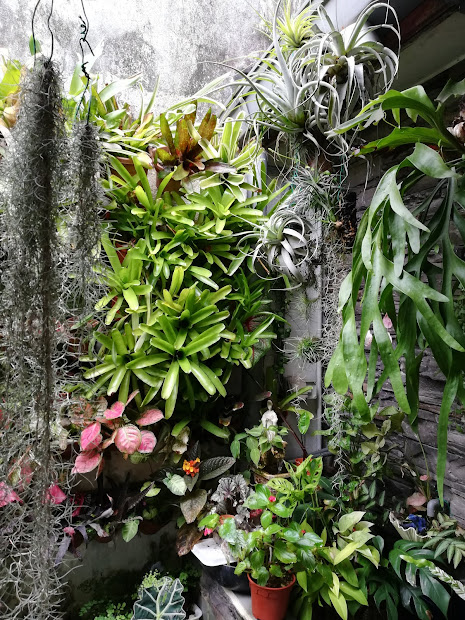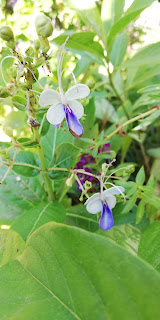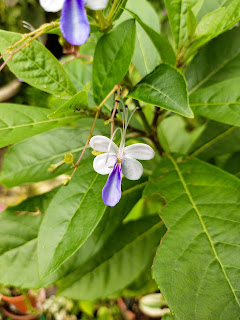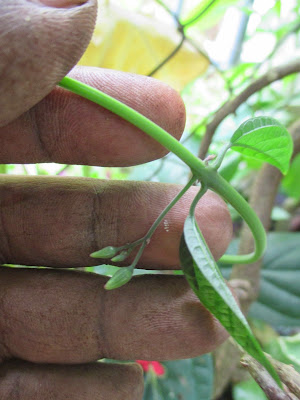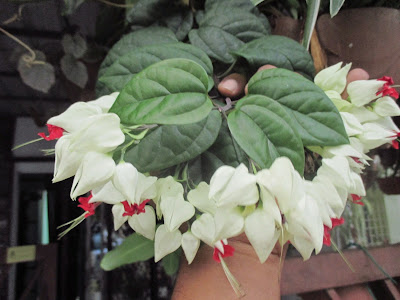INTRODUCTION:
Unlike most of the common types of Clerodendrum species which is the vining type, Clerodendrum Bungei is very much a shrub plant. Commonly known as Rose Glory Bower, Cashmere Bouquet, Mexicali Rose or Mexican Hydrangeas (not true Hydrangea family) however it does have similar appearance.
Considered native to China and somehow cultivated all around the tropical regions around Asia. This particular one is also cultivated around temperate regions due to it's cold hardiness which makes this plant all the more popular.
CHARACTERISTICS:
In its first appearance of plant growth, I noticed its upright standing plant where the stem have a dark coloration with slight stripped like appearance on the stem surface. I suspect that would had infected with scale insect but after close inspection - I was surprised to find that the plant had it's defend mechanism to mimic as if it had them on the stem.
The foliage were large and board almost like a hibiscus like foliage and it has a sandpaper like rough surface.
It took about few months for it to start it's bloom, however when the plant started to bud, I noticed that it had attracted ants which bought in alphids and mealybugs which was quite a menace. Every time when these plant was budding - these pest shows up usually with ants farming on the nectar.
However, nothing appears to stop this one from blooming - the showy full bloom is very much in pink appearance emits a nice sweet fragrance all day - often very much in evidence during morning and evening time.
The blooms last almost for few weeks and eventually the spend flowers starts to fade and dry off on the main crown and often I would trim off the whole top crown as it appears unattractive.
PROPAGATION
The best I found is from the matured stem cuttings. They may stay dormant for weeks, then sprouts may appear from the nodes. Sometimes few of the cuttings may not survive - so it is best to have more cuttings planted than just one.
Propagation can be done but stem cutting, stripping off the bottom leaves and poking it into a deep pot with a rich potting soil. Keep it in shade until you notice a new leaves growth.
Another method is to put the cutting into perlite medium (soaked in water) Once taken roots, it should be carefully transplanted into a good potting mix..
Once they start growing - you really don't have to worry as more vines and new plants emerge from the base roots area.
PRUNING:
One of the most challenging part for this shrub is pruning. They do grow extremely fast and become very unruly if not proper care is not given - especially when it comes to growth factor, this plant focus more on branching more stem and over growth rather than blooms which can be one of the down-side coming from this ever blooming plant.
However with the right pruning method and keeping it trimmed and manageable size - this one can be such a beauty. This plant can become into a full grown tree - hence pruning and keeping focused in making its growth into one main stem can allow it to bloom more gracefully and not creating a wild-like shrub with stem branching everywhere.
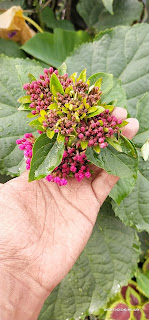
WATERING & FEEDING:
It may require a good adequate watering - both morning and evening based on the size of the plant.
You can grow it in a nice medium or large size pot, the plant will behave and grow based on the size of the pot. However I would recommend this to grow freely on ground if you want lushful beautiful constant blooms.
Also this plant is a heavy feeder and do feed adequately during the flowering season.
However take note that over-watering can cause them to bud-drop especially during the rainy season, hence a well balance fast draining medium to ensure no root rot occurs.
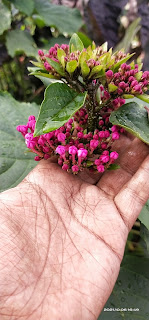
LIGHT:
Being a Tropical plant does require good strong indirect bright sunshine, It can tolerate growing in shaded area however it must receive at least few hours of sunshine. It does not do well in heavy shaded area and may not bloom in such conditions. Also the leaves may turn yellow to light green/pale green and also become leggy. Another factor in the lack of sunlight may cause the plant to become stress and can attract pest to heavily attack on them.
Hence do give a thought if your are not having open garden area as this would not so well as indoor plant - even placing them as a balcony potted plant can be challenging if they do not receive adequate light.

SOIL MEDIUM:
Considering one of the most basic thing about planting material - this one doesn't require anything special - just any balanced potting mix will do. They seem to do fine in a medium or big potted plant - however they will do great if they are planted directly into the garden soil as these will require just that to produce those lovely blooms.
However if limitation occurs where you can only grow in pot - then a good balanced potting mix with rich amount of organic material and equal part of well drained soil which will help from root rot.
Instance as such as these - they are often planted straight into open garden land where they are not in a pot - hence they appear hardy and able to take the heavy pruning.

SETBACK
They appear to be invasive & will crawl & sprout everywhere.
They do have a running underground rhizomes that new shoots to pop out elsewhere in the garden space. So you may have to watch out for that too. Once you plant this plant - consider it as a permanent plant in your garden, or else don't plant it because you will have hard time removing it.
(unless you are considering a major renovation in your garden)
Other than that, it is an easy going plant to cultivate.
